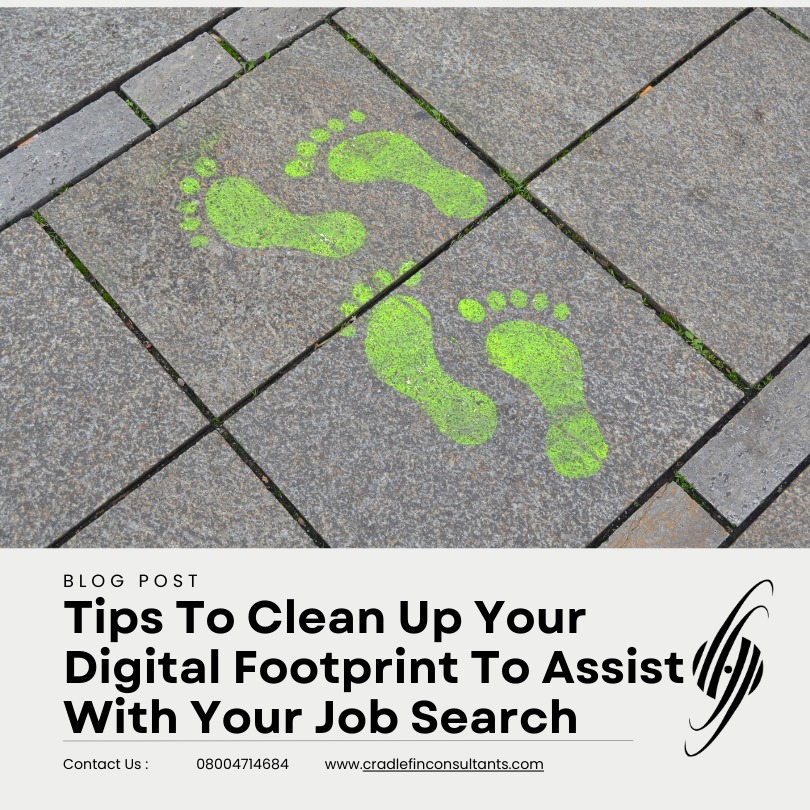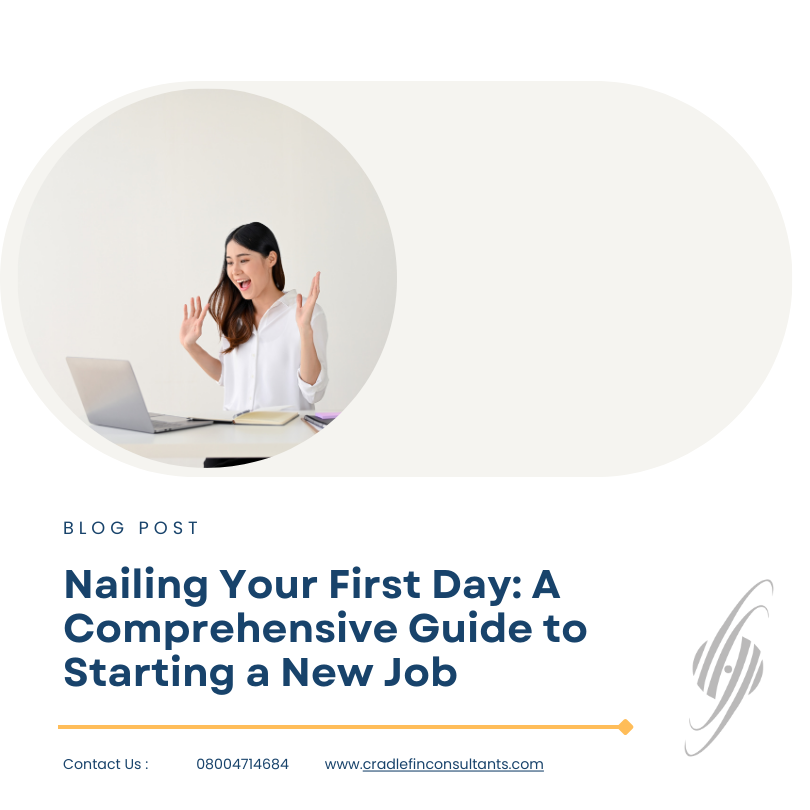1. Introduction: Understanding the Importance of a Clean Digital Footprint
In today’s digital age, it is essential to recognise the significance of a clean digital footprint, especially when embarking on a job search. Employers and recruiters increasingly rely on online platforms to learn more about candidates before making hiring decisions. Your digital presence, including social media profiles, online activities, and reputation, can significantly impact your professional image and job prospects. This article aims to provide valuable tips and strategies to help you clean up your digital footprint, ensuring that it aligns with your career goals and portrays you in the best possible light. By following these guidelines, you can enhance your online reputation, protect your privacy, and maximise your chances of landing the job you desire.
1. Introduction: Understanding the Importance of a Clean Digital Footprint
1.1 Why a Clean Digital Footprint Matters
In today’s digital age, your online presence can greatly impact your personal and professional life. A clean digital footprint refers to maintaining a positive and professional image across various online platforms. It means being mindful of the content you post, the way you interact with others, and the information available about you online. While it’s easy to think that what you do online doesn’t really matter, the truth is that employers often research candidates before making hiring decisions.
1.2 How a Clean Digital Footprint Can Impact Your Job Search
Having a clean digital footprint can greatly benefit your job search. Employers nowadays commonly use search engines and social media platforms to get a better understanding of potential candidates. Your online presence can serve as an extended resume, showcasing your skills, achievements, and professionalism. On the other hand, a negative or unprofessional digital footprint can harm your chances of getting hired. It’s essential to understand that what you share online can leave a lasting impression on employers and influence their perception of you as a candidate.
2. Assessing Your Current Digital Presence: Where to Begin
2.1 Conducting a Thorough Online Search of Your Name
Start by searching your name on popular search engines and social media platforms. Look for any information or content that might reflect poorly on you. This could include photos, posts, comments, or mentions of controversial topics. Take note of what you find and assess whether it aligns with the professional image you want to portray.
2.2 Evaluating Your Social Media Profiles
Go through your social media profiles, such as Facebook, Instagram, Twitter, LinkedIn, or any other platforms you use. Look at the content you’ve shared, the comments you’ve made, and the photos you’ve uploaded. Consider whether they present you in a positive and professional light. Remove any potentially damaging content or unprofessional posts that could jeopardise your job search.
2.3 Reviewing Your Online Activities and Presence
Beyond your social media profiles, consider other online activities such as blog posts, forums, or comments you may have made in the past. Review these interactions and make sure they align with your desired professional image. If you find any inappropriate or controversial content, take the necessary steps to remove or address it.
3. Streamlining Your Social Media Profiles: Best Practises and Privacy Settings
3.1 Reviewing and Updating Privacy Settings
Take the time to review and update the privacy settings on your social media profiles. Adjust the visibility of your posts, photos, and personal information to ensure that only the intended audience can access them. This will help protect your privacy and control who can see your online activities.
3.2 Removing Inappropriate or Unprofessional Content
Carefully go through all your social media posts and remove any content that may be deemed inappropriate or unprofessional. This includes offensive language, controversial opinions, or any content that could be misinterpreted by potential employers. Remember, you want to present a positive and professional image.
3.3 Optimising Your Profile to Showcase Your Skills and Experience
Use your social media profiles as an opportunity to highlight your skills, experience, and interests relevant to your desired job. Ensure your profiles are up-to-date and provide a comprehensive overview of your professional qualifications. Consider using keywords and industry-specific terms to optimise your profile for search engines.
4. Managing Online Reviews and Reputation: Strategies for a Positive Image
4.1 Monitoring and Responding to Online Reviews
Keep an eye on online platforms where your name or professional reputation may be mentioned, such as review websites or industry-specific forums. Respond professionally and promptly to any reviews or comments, both positive and negative. This demonstrates your ability to handle feedback maturely and showcases your commitment to customer satisfaction or professional growth.
4.2 Addressing Negative Feedback or Criticism
When encountering negative feedback or criticism online, avoid getting defensive or engaging in arguments. Instead, respond politely and constructively. Show empathy and willingness to address concerns, always maintaining a professional tone. This demonstrates your ability to handle challenging situations and resolve conflicts in a positive manner.
4.3 Building a Positive Online Reputation
Take proactive steps to build a positive online reputation by actively engaging in professional communities, sharing industry-related content, and participating in relevant discussions. Consider creating a personal website or blog where you can showcase your expertise and contribute valuable insights. Building a positive online presence will enhance your professional brand and make you stand out to potential employers.
Remember, cleaning up your digital footprint is an ongoing process. Regularly monitor and update your online presence to ensure it aligns with your professional goals and aspirations. By taking control of your digital footprint, you can greatly improve your chances of impressing potential employers and securing the job opportunities you desire. Personal Branding through Blogging or Social Media
5. Cleaning Up Your Online Activities: Removing Inappropriate Content and Unwanted Information
5.1 Identifying and Removing Old or Outdated Information
Let’s face it, we all have some skeletons in our digital closets. That embarrassing photo from college? The cringe-worthy status update from years ago? It’s time to give them the boot. Start by going through your social media accounts and online platforms to identify any old or outdated information that no longer reflects who you are today. Delete those posts, comments, or photos that might raise eyebrows or make potential employers raise an eyebrow. Remember, you want to put your best foot forward in your job search, so it’s important to clean up any digital cobwebs.
5.2 Managing and Deleting Unwanted Photos or Posts
You know that photo of you doing a keg stand at a party? Yeah, that might not be the best representation of your professionalism. While it may have been a fun memory at the time, it’s time to bid farewell to those types of images. Go through your social media accounts and profiles, and remove or untag yourself from any photos or posts that could potentially harm your job search. Remember, employers often look at social media profiles to get a sense of who you are as a person, so it’s important to curate the image you present.
5.3 Handling Inaccurate or False Information
Sometimes, misinformation or false information about you can find its way onto the internet. It’s important to tackle these inaccuracies head-on and set the record straight. If you come across any false information, reach out to the appropriate platforms or websites to request its removal. Additionally, consider creating your own content or updating your profiles to counteract any inaccurate information. After all, you’re the best person to tell your own storey.
6. Securing Your Personal Information: Protecting Privacy and Minimising Data Exposure
6.1 Reviewing Privacy Settings on Social Media and Online Platforms
In the digital age, privacy is a hot topic, and it’s crucial to protect your personal information. Take the time to review the privacy settings on your social media accounts and online platforms. Make sure you understand how your information is being shared and adjust the settings accordingly. By being mindful of who can see your posts and information, you can minimise the risk of unwanted exposure.
6.2 Implementing Strong Passwords and Two-Factor Authentication
We’ve all heard the importance of using strong passwords, yet many of us still use “password123” as our go-to. It’s time to level up your password game. Create unique, complex passwords for all your online accounts and consider using a password manager to keep track of them. Additionally, enable two-factor authentication whenever possible. This extra layer of security will help keep your accounts safe from unauthorised access.
6.3 Being Cautious of Sharing Personal Information Online
While it’s tempting to share every detail of our lives online, it’s important to be cautious about the information we disclose. Avoid sharing sensitive personal information, such as your home address, phone number, or financial details, openly on social media or other online platforms. Think twice before clicking that “Post” button and ask yourself if the information you’re sharing is necessary and safe.
7. Building a Professional Online Presence: Showcasing Skills and Expertise
7.1 Creating and Maintaining a LinkedIn Profile
LinkedIn is the go-to platform for professionals, so it’s essential to have a strong presence there. Create a compelling profile that highlights your skills, experience, and accomplishments. Connect with colleagues, classmates, and professionals in your industry to expand your network. Regularly update your profile with relevant information and engage with the LinkedIn community by sharing industry insights and participating in discussions.
7.2 Developing a Professional Website or Portfolio
In addition to LinkedIn, consider creating a professional website or portfolio to showcase your work. This is especially important for creative fields or industries where visual representation matters. Use your website to display your projects, provide a brief bio, and include your contact information. A well-designed and easily accessible website can greatly enhance your professional image.
7.3 Engaging in Thought Leadership and Personal Branding through Blogging or Social Media
Blogging or utilising social media platforms can be a powerful way to establish yourself as a thought leader in your field. Share valuable insights, tips, or industry news through regular blog posts or social media content. This not only helps you build credibility and authority but also allows potential employers to see your expertise first-hand. Remember to be consistent in your content and engage with your audience to nurture your online presence.
8. Utilising Online Tools and Resources: Monitoring and Enhancing Your Digital Footprint
8.1 Using Google Alerts to Stay Informed
Google Alerts can be a handy tool to monitor your online presence. Set up alerts for your name, industry keywords, or any other relevant topics to stay informed about what’s being said about you or your field. This way, you can address any potential issues quickly and ensure your digital footprint remains positive and up-to-date.
8.2 Utilising Reputation Management Services
If maintaining your online presence feels overwhelming or time-consuming, consider enlisting the help of reputation management services. These services specialise in monitoring and enhancing your online reputation, ensuring that your digital footprint reflects your professional image. They can provide valuable insights and strategies to shape and maintain a positive online presence.
8.3 Regularly Monitoring and Updating Your Online Profiles
Last but not least, make it a habit to regularly review and update your online profiles. Keep your information accurate and relevant, and remove any outdated content or connections. Stay active on platforms that are relevant to your industry, engage with others in a professional manner, and continue to build your online presence. By keeping a watchful eye on your digital footprint, you can ensure that it aligns with your career goals and aspirations.
Remember, cleaning up your digital footprint takes time and effort, but it’s worth it in the long run. By following these tips, you can present the best version of yourself online and increase your chances of finding your dream job. Happy cleaning! In conclusion, taking proactive steps to clean up your digital footprint can greatly assist in your job search. By assessing your current online presence, streamlining your social media profiles, managing online reviews and reputation, cleaning up unwanted content, securing your personal information, and building a professional online presence, you can present yourself as a strong and qualified candidate to potential employers. Remember, maintaining a consistent and positive digital persona is essential in today’s digital landscape. By implementing the tips and strategies outlined in this article, you can pave the way for a successful job search and set yourself up for long-term professional success.
FAQs – Tips To Clean Up Your Digital Footprint To Assist With Your Job Search
1. Why is it important to clean up my digital footprint before starting a job search?
Cleaning up your digital footprint is crucial because employers and recruiters often conduct online research to learn more about candidates. Your online presence can significantly impact their perception of you as a professional. By ensuring a clean digital footprint, you can present yourself in a positive light and increase your chances of landing the job you desire.
2. What are some key areas to focus on when cleaning up my digital footprint?
There are several key areas to focus on when cleaning up your digital footprint. These include assessing and removing inappropriate or unprofessional content from your social media profiles, managing online reviews and reputation, deleting outdated or unwanted information, securing your personal information, and building a professional online presence that showcases your skills and expertise.
3. How can I protect my privacy while cleaning up my digital footprint?
To protect your privacy while cleaning up your digital footprint, it is important to review and update your privacy settings on social media platforms and online platforms. You should also be cautious about sharing personal information online and implement strong passwords and two-factor authentication to secure your accounts.
4. How can I maintain a consistent digital persona across different online platforms?
Maintaining a consistent digital persona is key to building a strong online reputation. You can achieve this by ensuring that the information, photos, and posts you share on various platforms align with your professional image. It is also important to present your skills and experience consistently across platforms such as LinkedIn, personal websites, and other professional networks to create a cohesive online presence.





